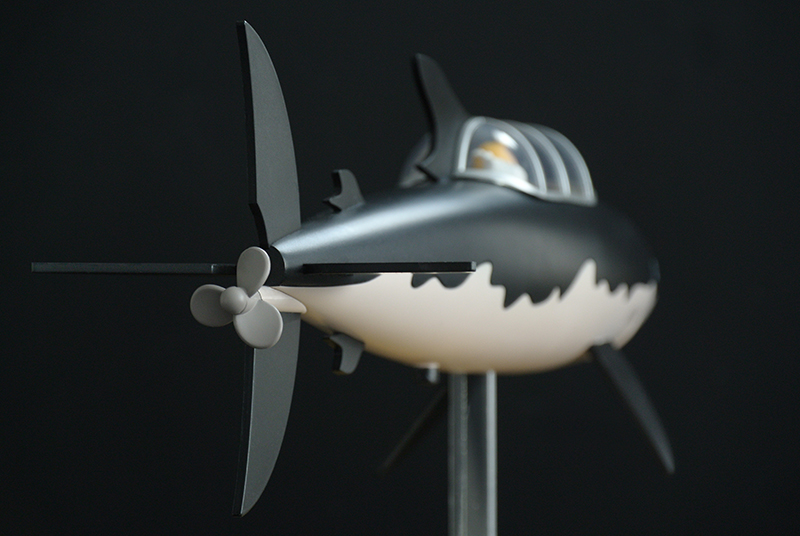No products
Product successfully added to your shopping cart
There are 0 items in your cart. There is 1 item in your cart.
2 - Icons Tintin: Shark submarine 26cm
46402
New
| Object colour | Polychrome |
| Finish | Matt |
| Material | Resin |
| Certificate | Yes |
| Numbered edition | Yes |
| L x w x h (cm) | 26.50 x 10.00 x 15.20 |
| Weight | 810g |
| L x w x h (cm) box | 34.00 x 21.00 x 16.00 |
| Packaging weight | 1,710g |
| Made in China |
By buying this product you can collect up to 24 loyalty points. Your cart will total 24 points that can be converted into a voucher of 4,80€.
Some products may be excluded.
This is a stunning resin replica of the invention of Professor Calculus, which has been produced with strict faithfulness.
The submarine is fixed on a transparent stand at the right height to give the impression that the craft is floating above the ground. The base is painted yellow to give the impression of the sand on the seabed.
The model is neither too big nor too small (266 mm), it has been reduced to a suitable size to integrate harmoniously with the other pieces in the collection.
We also opted for a satin finish that brings an extra touch of gracefulness to the object. Also setting it visually consistent with the other pieces in the collection.
Our designers tell us about their underwater adventure. Diving with them into the depths ...
After the lunar rocket, the shark submarine is one of Hergé's most memorable creations.
Like the rocket, it is an invention of Professor Cuthbert Calculus. As with the rocket, it has an original and strong visual presence that has struck the imagination of generations of readers. We cannot count the number of fans who made a model of the submarine in their garage, often motorized and radio controlled, sometimes even real size! This inspiring invention as earned its right for second place in the “Icons” collection.
Being ourselves genuine fans of the work, we try every time to achieve the most accomplished version of the models, the one we would wish to see displayed on our own shelves.
To better define the subject, we always begin our work with historical and iconographic research.
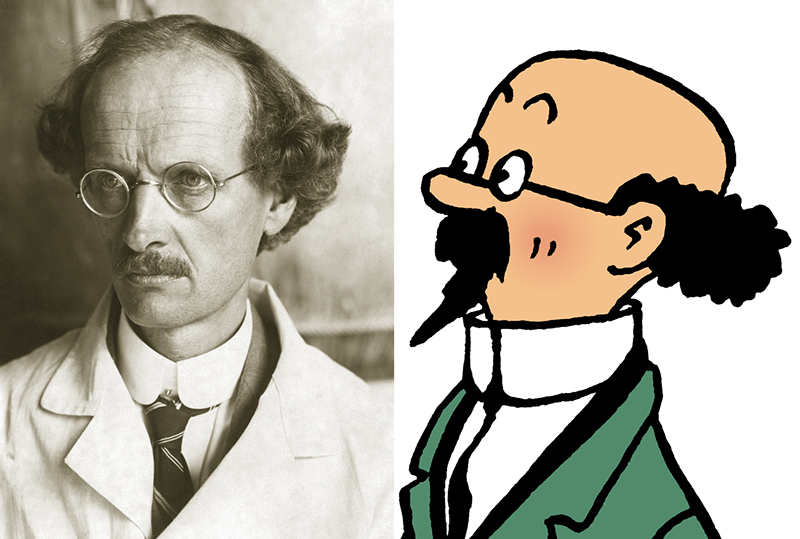
Contrary to his usual habit, Hergé did not really take real world reference points to imagine the submarine.
He said he was inspired by Auguste Piccard and his bathyscaphe to create the character of Calculus. But to tell the truth, he was more inspired by the inventor himself rather than his invention. It was because from a visual and functional point of view, the bathyscaphe is very far from Professor Calculus’s innovation. What the two vehicles do have in common, to have been designed for an exclusively civilian purpose, which was exceptional at the time. During the Second World War, even though some engineers had begun studying single-seater or two-seater submarines, no prototype had been made and the idea of a "pocket submarine" for civilian use was not envisaged.

The choice of the shark
According to the coordinates provided by Sir Francis Haddock (which must be calculated in relation to the Paris Meridian and not that of Greenwich, as discovered by Tintin), we can locate the island and the wreck of the Unicorn in the north- the Dominican Republic.
As we know, these waters are home to a wide variety of sharks. The great white shark is one of these and it is probably that which would have inspired the inventor. The inventors submarine was therefore useful for blending into the local marine life.
In real size, the submarine would have measured nearly 6 feet, which corresponds to the average size of an adult. A characteristic of this species of shark is the presence of two very contrasting colours on the dorsal and underside, divided by a wavy line all along the body.
Hergé softened the animal's naturally sinister air, giving it a friendly, harmless smile.
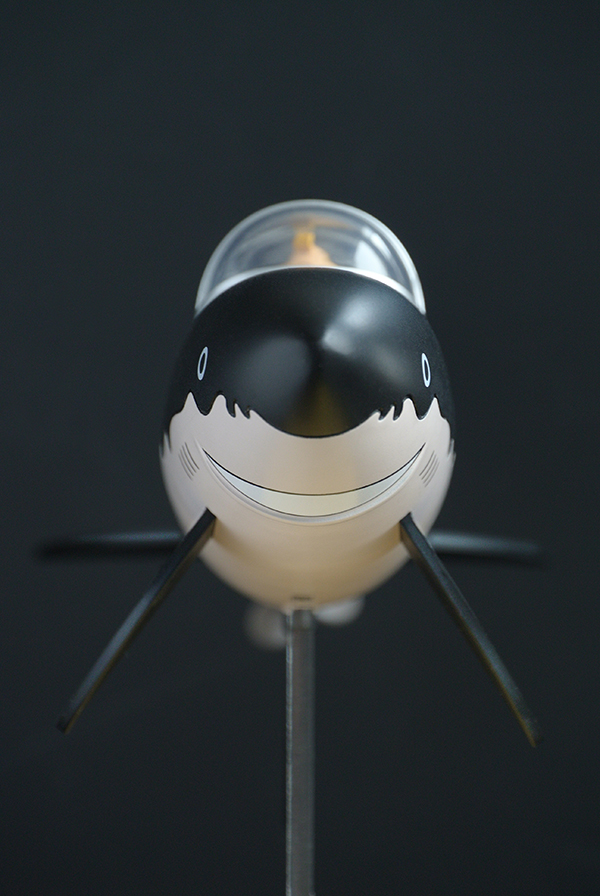
In short, the choices made by Hergé show that we are in the presence of an authentic creation on his part. So we had to concentrate exclusively on the drawings.
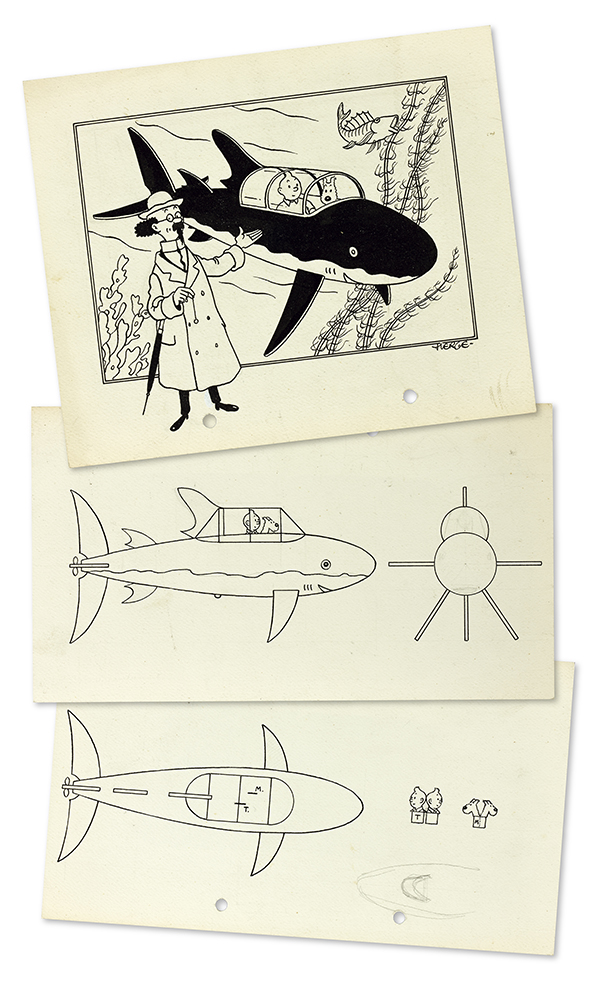
A curiosity has recently resurfaced: the outline of a plan executed by Hergé around 1944-45 on small punched cards, probably to prepare the launch of a derivative product. This is the only known plan drawn by Hergé, unfortunately it turns out not to agree with the impression that we have of the device in the album. There are some differences: The canopy is larger and the front and rear windows are not hemispherical, the fins are longer too. The machine has been simplified and caricatured, a bit like a toy. This was not very useful to us and we had to rely mainly on the album, extrapolating and putting together the different frames where the submarine is presented.
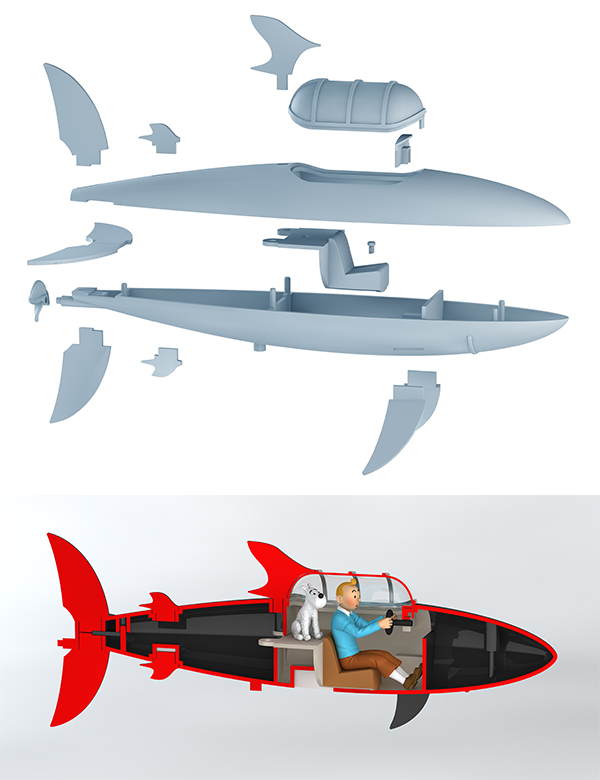
Regarding the design of the model itself, one of our priorities was that the figures are presented in full and uncut at the shoulders or waist to simplify the manufacture. The cockpit had to be completely recreated since it was never drawn in the album: it was necessary to imagine the seat, a platform to allow Snowy to be installed at the right height, the dashboard, without forgetting the "little red button" for the release of the smoke.
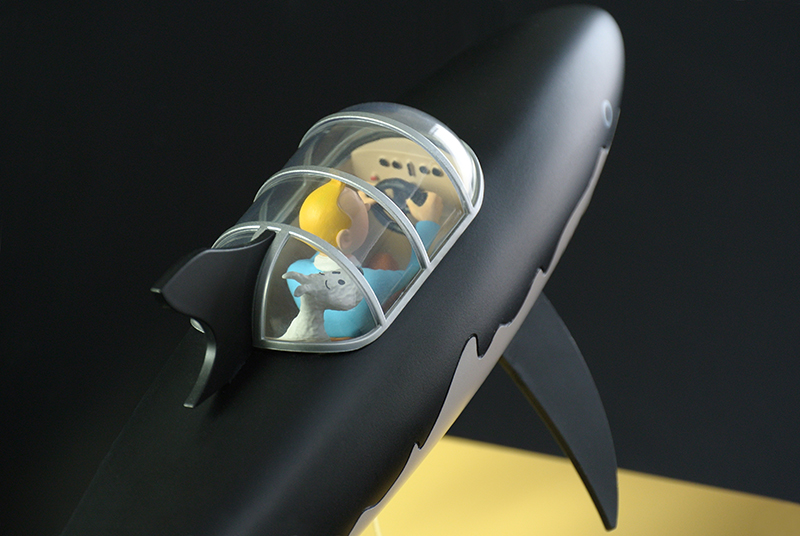
In order for Tintin's face to stand out better in the drawing, Hergé filled the back of the canopy with a flat color. It is a graphic trick that is difficult to translate into 3-D. Therefore a small contradiction is assumed in relation to the drawing since the entire canopy is transparent in the model.
At the manufacturing level, we initially planned that the hull was hollow and weighted with resin to give a satisfactory mass to the object, but the seal between the two parts of the hull was found too visible. To correct this defect, we then chose to make the body entirely in resin, the other parts being injection moulded.
The submarine is fixed on a transparent stand at the right height to give the impression that the craft is floating above the ground. The base is painted yellow to give the impression of the sand on the seabed.
The model is neither too big nor too small (266 mm), it has been reduced to a suitable size to integrate harmoniously with the other pieces in the collection.
We also opted for a satin finish that brings an extra touch of gracefulness to the object. Also setting it visually consistent with the other pieces in the collection.
In short, after several months of work and development in the studio, we are quite proud of the result and we believe that it is up to the expectations of a true fan of The Adventures of Tintin.
